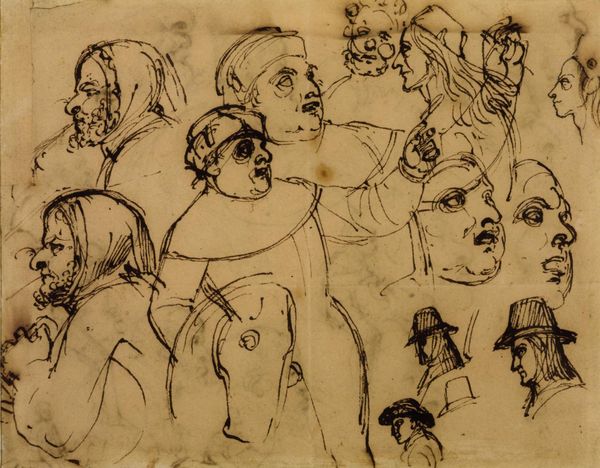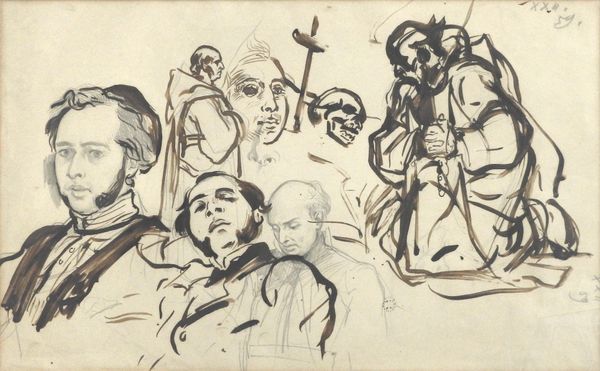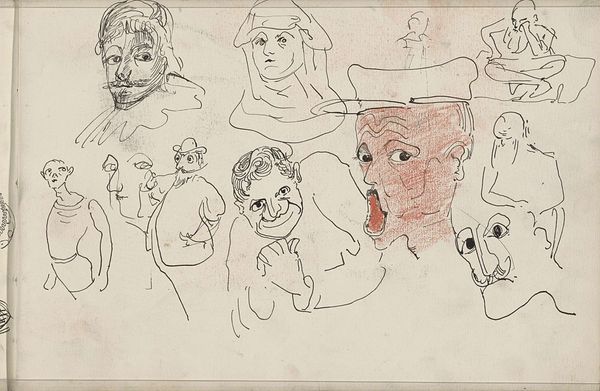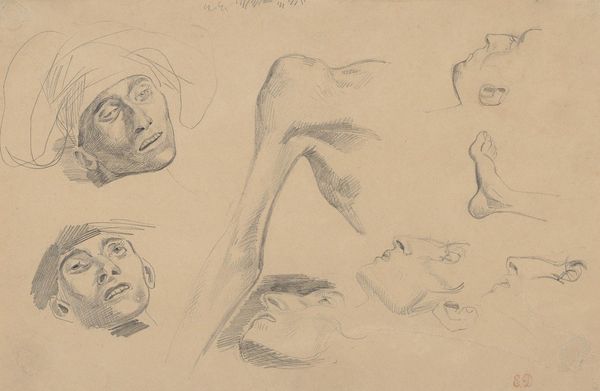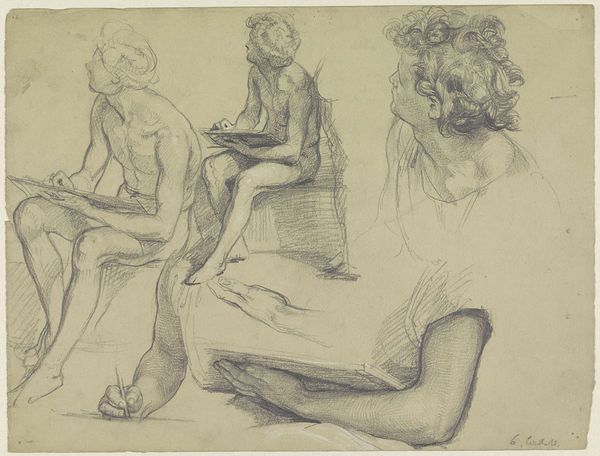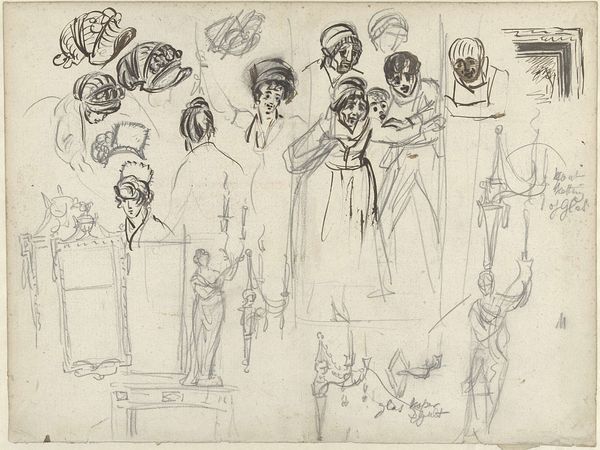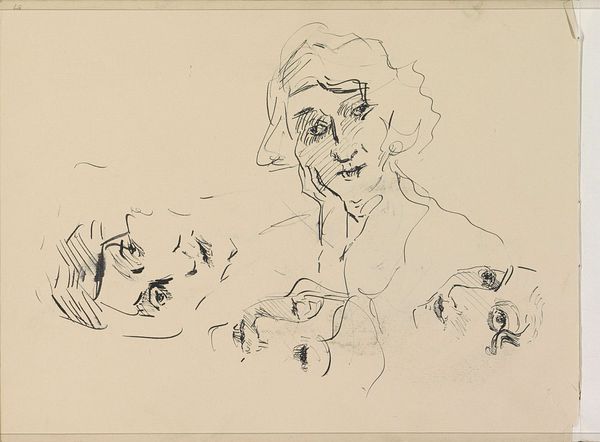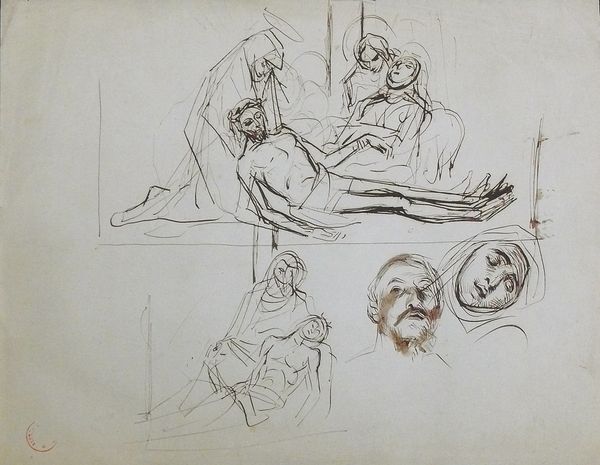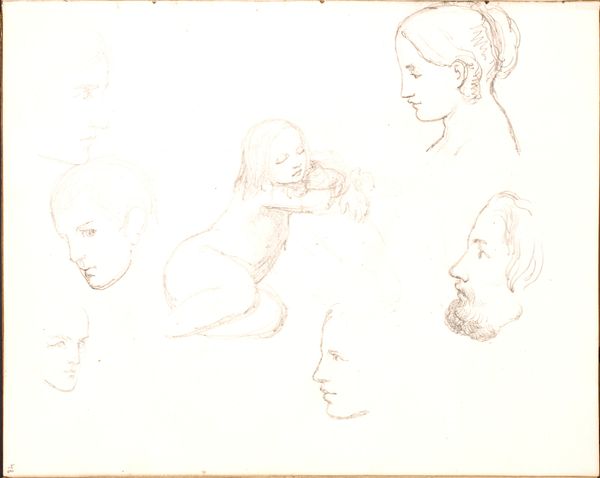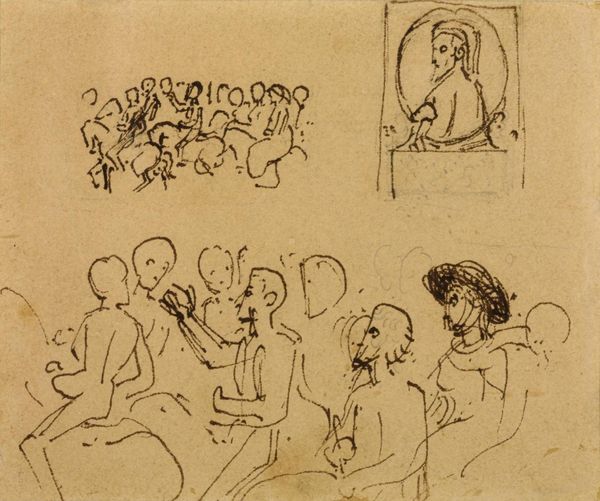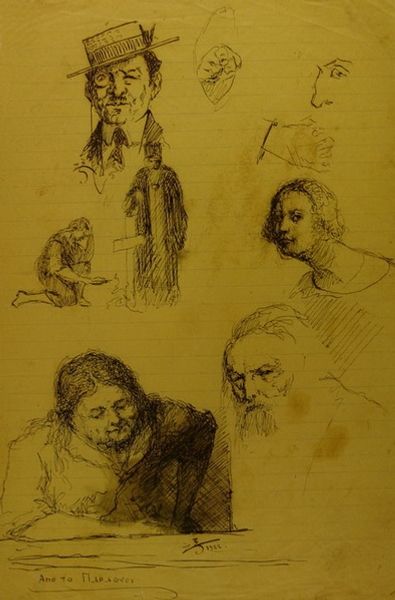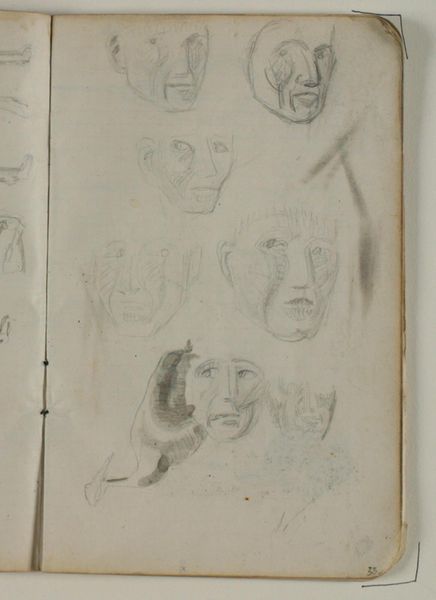
drawing, watercolor, pencil
#
portrait
#
drawing
#
figuration
#
watercolor
#
romanticism
#
pencil
#
orientalism
Copyright: Public Domain: Artvee
Curator: Well, this is fascinating! Before us, we have Eugène Delacroix's "Studies of Arab Heads and Figures," dating from after 1832. It’s a sheet filled with rapidly drawn sketches in pencil and watercolor. Honestly, it feels like we’re looking into Delacroix's personal sketchbook. What are your first thoughts? Editor: My first thought is pure visual anthropology, but with a palpable undercurrent of romantic fascination. The faces... they’re like fragments of stories. They feel so fleeting and yet each one pulses with a sort of self-contained energy. Like catching a glimpse of someone deeply engrossed in their own thoughts. Curator: That captures it beautifully. This was done after Delacroix’s trip to Morocco with the Comte de Mornay. It's important to remember the power dynamics at play; he was moving in elite circles and viewing another culture from that remove. "Orientalism," as it came to be called, was a lens through which many European artists viewed the East, tinged with preconceived notions. Editor: Absolutely, there’s that tightrope walk of capturing the "exotic" while teetering on the edge of cliché or misrepresentation. But Delacroix...he's not merely cataloging. There's this genuine attempt to grapple with something beyond the superficial. I sense an urgency, like he's chasing a feeling or an atmosphere. Did he have access to the people or do you think these faces came more from memory? Curator: It’s thought he did have models during that journey, but sketchbooks like this are where impressions solidify and are reshaped by memory. See how some of the faces are so lightly rendered they are almost ghost-like while others have bold lines and color wash? The range reveals the mind at work, constantly circling the subject. I see him searching to truly “see” something. The watercolors create such luminous skin tones. Editor: Exactly, those fleeting washes... the overall effect has a really wonderful sense of immediacy. It’s like peeking over the shoulder of a restless creative mind! In those individual glimpses you get hints of weariness, quiet dignity, introspection… and maybe it mirrors his self. Curator: Perhaps, but one must approach with caution when assuming likeness. Regardless, thank you, it is interesting to sit with art and share your initial thoughts in order to view the art differently! Editor: Always a pleasure, thank you as well! Now, if only all history lessons could be like this…
Comments
No comments
Be the first to comment and join the conversation on the ultimate creative platform.
